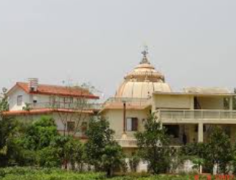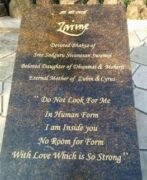By Shreyas Devaraj
Doctor Radha Gobind Kar (1850-1918)
 This Bengal-born Doctor graduated from the Royal College of Physicians and Surgeons, England, and returned to India instead of a lucrative medical practice to serve the poor slum dwellers in Calcutta. He had a bicycle to ride to the slums and demonstrated his service orientation. He was attracted by the magnetic influence of Sister Nivedita, a direct devotee of Swami Vivekananda. Along with like-minded friends, he collected funds to establish the first non-governmental Medical School to train Doctors of Indian origin in 1880
This Bengal-born Doctor graduated from the Royal College of Physicians and Surgeons, England, and returned to India instead of a lucrative medical practice to serve the poor slum dwellers in Calcutta. He had a bicycle to ride to the slums and demonstrated his service orientation. He was attracted by the magnetic influence of Sister Nivedita, a direct devotee of Swami Vivekananda. Along with like-minded friends, he collected funds to establish the first non-governmental Medical School to train Doctors of Indian origin in 1880  which became renowned as RG Kar Hospital and Medical College. Kar donated his property to build this institution. In 1968 the Government of West Bengal took over this Hospital and Medical College. Over the last 144 years, tens and hundreds of young men and women have become doctors. He passed away after a fulfilled life in 1918 soon after the Maha Samadhi of Sai Maharaj.
which became renowned as RG Kar Hospital and Medical College. Kar donated his property to build this institution. In 1968 the Government of West Bengal took over this Hospital and Medical College. Over the last 144 years, tens and hundreds of young men and women have become doctors. He passed away after a fulfilled life in 1918 soon after the Maha Samadhi of Sai Maharaj.
Sri Dwarika Mohan Misra (1930-2023)
 Sri Dwarika Mohan Misra of Bhubaneswar was a firebrand Trade Union Leader and was a member of the Parliament in the Nineteen Seventies. He was known to shake Governments as he was known for calling ‘a spade a spade’. In the early eighties, he came under the magnetic influence of Sri Ganeshnath Maharaj, a saint from Manasarovar, and Bhima Sankar who is supposedly over 150 years old. After that,
Sri Dwarika Mohan Misra of Bhubaneswar was a firebrand Trade Union Leader and was a member of the Parliament in the Nineteen Seventies. He was known to shake Governments as he was known for calling ‘a spade a spade’. In the early eighties, he came under the magnetic influence of Sri Ganeshnath Maharaj, a saint from Manasarovar, and Bhima Sankar who is supposedly over 150 years old. After that,  Misra’s life took a 360-degree turn and he went to establish ‘Sai Dattatreya Ashram’ at Dhenkanal, Kailash, in a forest 100 kilometers from Bhubaneswar that has attracted thousands of Sai devotees from all over the country; He used to organize ‘Sai Prasad’ to over 25,000 devotees on the anniversary day of the Ashram in February every year. This ritual continues even after his demise by his children and Sai devotees, the resources for which come from Baba’s grace. He authored over twenty-five books on Sai Maharaj which have profound religious significance. He is a recipient of several State and Central Government awards.
Misra’s life took a 360-degree turn and he went to establish ‘Sai Dattatreya Ashram’ at Dhenkanal, Kailash, in a forest 100 kilometers from Bhubaneswar that has attracted thousands of Sai devotees from all over the country; He used to organize ‘Sai Prasad’ to over 25,000 devotees on the anniversary day of the Ashram in February every year. This ritual continues even after his demise by his children and Sai devotees, the resources for which come from Baba’s grace. He authored over twenty-five books on Sai Maharaj which have profound religious significance. He is a recipient of several State and Central Government awards.
Mother Zarine Taraporevala (1931-2006)
Mother Zarine was born in a Parsi business family in 1931. With a brilliant academic  background at St. Mary’s School and later at
background at St. Mary’s School and later at Elphinstone College, Mumbai, she studied Law and graduated with a Gold Medal. Professionally, she distinguished herself as an able administrator in the field of synthetic fiber fabrics for 25 years. Thereafter she held dual responsibilities as Secretary of the Western India Automobile Association and Federation of Indian Automobile Associations. She accepted Sri Sivanesan Swamiji as her Gurudev and became a well-known devotee of Sai Maharaj and she has translated Hemadpant’s magnum opus ‘Sai Satcharitra’ verse by verse from Marathi into English. Her other works are – Das Ganu Maharaj’s Stavana Manjari, Ashtothara Shata Namavali and Sagunopasana. She has also authored ‘God’s Rainbow’ highlighting the greatness of Sivanesan Swamiji. She also gifted a parcel of land 5 kilometers from Shirdi on Pimplwadi Road to build a memorial to Sivanesan Swamiji. Zarine was entombed there after her demise in 2006. Her residence in Worli Sea Face, Mumbai was an Ashram of Lord Sainath, and she lived like a ‘Sannyasin’.
Elphinstone College, Mumbai, she studied Law and graduated with a Gold Medal. Professionally, she distinguished herself as an able administrator in the field of synthetic fiber fabrics for 25 years. Thereafter she held dual responsibilities as Secretary of the Western India Automobile Association and Federation of Indian Automobile Associations. She accepted Sri Sivanesan Swamiji as her Gurudev and became a well-known devotee of Sai Maharaj and she has translated Hemadpant’s magnum opus ‘Sai Satcharitra’ verse by verse from Marathi into English. Her other works are – Das Ganu Maharaj’s Stavana Manjari, Ashtothara Shata Namavali and Sagunopasana. She has also authored ‘God’s Rainbow’ highlighting the greatness of Sivanesan Swamiji. She also gifted a parcel of land 5 kilometers from Shirdi on Pimplwadi Road to build a memorial to Sivanesan Swamiji. Zarine was entombed there after her demise in 2006. Her residence in Worli Sea Face, Mumbai was an Ashram of Lord Sainath, and she lived like a ‘Sannyasin’.
Professor Saligrama Subbaramaiah (1933-2023)
 Born in a Telugu Brahmin family Saligrama Subbaramaiah was a free thinker, a multi-linguist, and a great Orator and writer of repute. He had a distinguished teaching career and retired as Dean of the Faculty of Management Studies, at Krishna Devaraya University in Andhra Pradesh. Sri Gopalakrishna Baba of Girinagar was his Guru. He has authored forty-three books in Kannada and English and his magnum opus is Kannada translation of Hemadpant’s ‘Sai Satcharitra’ which has gone into seven editions. His books deal with Datta’s incarnations and several saints. In his lectures, he used to quote profusely from scriptures.
Born in a Telugu Brahmin family Saligrama Subbaramaiah was a free thinker, a multi-linguist, and a great Orator and writer of repute. He had a distinguished teaching career and retired as Dean of the Faculty of Management Studies, at Krishna Devaraya University in Andhra Pradesh. Sri Gopalakrishna Baba of Girinagar was his Guru. He has authored forty-three books in Kannada and English and his magnum opus is Kannada translation of Hemadpant’s ‘Sai Satcharitra’ which has gone into seven editions. His books deal with Datta’s incarnations and several saints. In his lectures, he used to quote profusely from scriptures.

Leave a Reply